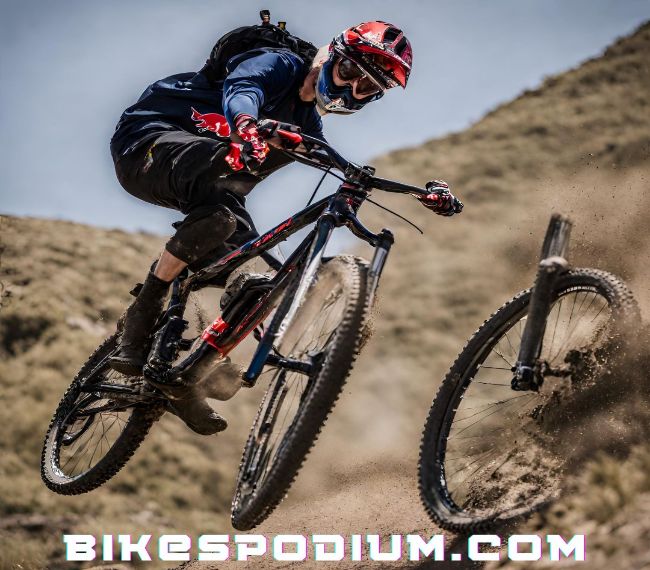Dirt Bike Vs Mountain Bike
1. Introduction
Dirt biking and mountain biking are two popular outdoor activities that offer an adrenaline rush and a thrilling experience. Both sports have their own unique characteristics and appeal to different individuals. In this comprehensive comparison, we will explore the differences between dirt bikes and mountain bikes to determine which one is more extreme.
1.1 Dirt Bikes
Dirt bikes, also known as off-road motorcycles, are specifically designed for riding off-road terrains. These powerful machines feature lightweight frames, knobby tires, and robust suspension systems. Dirt bikes are built for speed, agility, and maneuverability, making them ideal for navigating challenging trails and rough terrains.
Dirt bikes are equipped with powerful engines that allow them to conquer highly demanding off-road terrains such as dirt tracks, motocross circuits, and rugged trails. Their aggressive tires provide excellent traction, allowing riders to tackle steep inclines and navigate tight corners with ease. The robust suspension systems on dirt bikes absorb impact and provide riders with better control during jumps and landings, enhancing the overall riding experience.
1.2 Mountain Bikes
Mountain bikes, on the other hand, are bicycles designed for off-road cycling. They are equipped with wider tires, stronger frames, and suspension systems to absorb shocks and bumps. Mountain bikes come in various forms, including hardtail and full-suspension bikes, to cater to different terrains and riding styles.
Mountain bikes are versatile and can handle a wide range of terrains, including dirt trails, rocky paths, and forested areas. While they may not match the speed of dirt bikes, mountain bikes offer excellent maneuverability. Their wider tires provide better traction and stability, allowing riders to navigate over uneven terrains with ease. Mountain bikes are specifically designed for endurance and control, making them suitable for conquering challenging climbs and navigating technical descents.
2. Terrain and Riding Experience
One of the key differences between dirt bikes and mountain bikes lies in the terrain they are built to conquer.
2.1 Dirt Bikes
Dirt bikes are designed to tackle highly demanding off-road terrains like dirt tracks, motocross circuits, and rugged trails. With their powerful engines and aggressive tires, dirt bikes excel in conquering steep inclines, navigating tight corners, and performing jumps and stunts. They offer riders a high-intensity, adrenaline-pumping experience.
Dirt bikes are specifically built for extreme off-road riding. They are capable of handling challenging terrains with ease, including steep inclines, deep ruts, and muddy trails. The powerful engines of dirt bikes allow riders to accelerate quickly and reach high speeds, providing an exhilarating experience. The aggressive tires on dirt bikes provide excellent traction, allowing riders to maintain control even on loose surfaces. This enables riders to conquer obstacles such as rocks, tree roots, and fallen branches that would be more challenging to navigate on a regular mountain bike.
2.2 Mountain Bikes
Mountain bikes, on the other hand, are versatile and can handle a wide range of terrains, including dirt trails, rocky paths, and forested areas. They are not as powerful as dirt bikes but are built for endurance and control. Mountain biking offers a more endurance-based experience, where riders can explore scenic landscapes, conquer challenging climbs, and navigate technical descents.
Mountain bikes are designed to provide a smooth and comfortable ride over various terrains. They are suitable for riders who enjoy exploring nature and taking in the scenic beauty around them. Mountain biking allows riders to venture into forests, mountains, and other natural landscapes, providing a sense of adventure and discovery. While not as extreme as dirt biking, mountain biking still offers its own set of challenges, including navigating through narrow trails, avoiding obstacles, and maintaining balance on uneven surfaces.
3. Speed and Maneuverability
Another aspect to consider when comparing dirt bikes and mountain bikes is their speed and maneuverability.
3.1 Dirt Bikes
Dirt bikes are designed for speed and agility. With their powerful engines and lightweight frames, they can reach high speeds in a matter of seconds. The suspension systems absorb impact and provide riders with better control during jumps and landings. Dirt bikes excel in sharp turns, allowing riders to quickly change direction and maneuver through challenging obstacles.
The lightweight frames and powerful engines of dirt bikes enable them to achieve impressive speeds. Dirt bikes are built for acceleration, allowing riders to reach high speeds in a short amount of time. This speed is essential for conquering obstacles, navigating through tight corners, and performing jumps and stunts. The suspension systems on dirt bikes play a crucial role in maintaining stability and control, especially during high-speed maneuvers and landings.
3.2 Mountain Bikes
While mountain bikes may not match the speed of dirt bikes, they offer excellent maneuverability. Their wider tires provide better traction and stability, allowing riders to navigate over uneven terrains with ease. Mountain bikes excel in technical sections, where riders need to negotiate tight turns, rocks, and roots. The suspension systems on mountain bikes also enhance control, ensuring a smooth ride over rough surfaces.
While mountain bikes may not reach the same speeds as dirt bikes, they offer a different kind of agility and maneuverability. The wider tires of mountain bikes provide better traction, allowing riders to maintain control and stability while navigating through technical sections. Mountain bikes are designed to handle tight turns, rocky terrains, and obstacles such as tree roots and fallen branches. The suspension systems on mountain bikes help absorb shocks and bumps, providing riders with a more comfortable and controlled riding experience.
4. Physical Demands and Fitness Benefits
Both dirt biking and mountain biking offer physical and fitness benefits. However, the demands placed on the body differ.
4.1 Dirt Bikes
Dirt biking is a high-intensity sport that demands physical strength, balance, and coordination. Riders need to have good upper body strength to control the bike, especially in the air during jumps and stunts. The constant maneuvering and quick reflexes required in dirt biking provide an excellent full-body workout and improve cardiovascular fitness.
Dirt biking requires riders to have good upper body strength and core stability. The nature of the sport involves constant maneuvering, especially during jumps and stunts. Riders need to have good balance and coordination to control the bike in the air and land safely. The physical demands of dirt biking provide a full-body workout, engaging muscles in the arms, shoulders, back, and core. Additionally, the high-intensity nature of dirt biking improves cardiovascular fitness, as riders experience an increased heart rate and elevated breathing during intense rides.
4.2 Mountain Bikes
Mountain biking also requires physical fitness but focuses more on endurance and stamina. The constant pedaling, especially during uphill climbs, challenges the cardiovascular system and builds leg strength. The nature of mountain biking, with its varying terrains and obstacles, engages the core muscles, improving stability and balance.
Mountain biking is a sport that requires endurance and stamina. Riders often encounter long, challenging trails and steep inclines that require consistent pedaling. This constant pedaling helps build leg strength and endurance, as the muscles are constantly engaged. The varying terrains and obstacles in mountain biking also engage the core muscles, as riders need to maintain stability and balance. The combination of cardiovascular exercise, leg strength, and core engagement makes mountain biking a great workout for overall fitness.
5. Safety and Risk Factors
Both dirt biking and mountain biking involve inherent risks, and safety precautions should always be taken into consideration.
5.1 Dirt Bikes
Dirt biking is considered a more extreme sport due to the higher speeds and jumps involved. Riders must wear protective gear such as helmets, goggles, chest protectors, knee pads, and boots to minimize the risk of injuries. Proper training and experience are crucial to ensure safety while enjoying the adrenaline rush of dirt biking.
Safety is of utmost importance in dirt biking, as the sport involves higher speeds and jumps. Riders must wear appropriate protective gear to minimize the risk of injuries. This includes helmets, goggles, chest protectors, knee pads, and boots. The protective gear helps protect riders from potential impacts and abrasions. Additionally, proper training and experience are essential to ensure safety while performing jumps and stunts. Riders should be familiar with the techniques and have the necessary skills to execute maneuvers safely.
5.2 Mountain Bikes
Mountain biking, although less extreme, still carries risks. Protective gear such as helmets, knee pads, and gloves are recommended to prevent injuries. Riders should also be aware of their skill level, choose appropriate trails, and ride within their limits to minimize accidents.
While mountain biking may not be as extreme as dirt biking, it still carries its own set of risks. Riders should wear protective gear such as helmets, knee pads, and gloves to minimize the risk of injuries in case of falls or collisions. It is important for riders to assess their skill level and choose trails that are suitable for their abilities. Riding within one’s limits and avoiding unnecessary risks can significantly reduce the chances of accidents and injuries.
6. Conclusion
In conclusion, both dirt biking and mountain biking offer unique and exhilarating experiences. The choice between the two depends on personal preferences, riding style, and the level of intensity one seeks. Dirt bikes are built for extreme off-road riding, with high speeds, jumps, and stunts. Mountain bikes, on the other hand, provide a versatile and endurance-based experience, catering to a wider range of terrains.
Whether you prefer the extreme speed and agility of dirt biking or the endurance and technical challenges of mountain biking, both sports offer an escape from the ordinary and an opportunity to connect with nature while enjoying the thrill of two-wheeled adventures.
FAQ
Q1: What are dirt bikes?
A1: Dirt bikes, also known as off-road motorcycles, are specifically designed for riding off-road terrains. They feature lightweight frames, knobby tires, and robust suspension systems.
Q2: What are mountain bikes?
A2: Mountain bikes are bicycles designed for off-road cycling. They are equipped with wider tires, stronger frames, and suspension systems to absorb shocks and bumps.
Q3: What terrains can dirt bikes conquer?
A3: Dirt bikes are built to tackle highly demanding off-road terrains such as dirt tracks, motocross circuits, and rugged trails.
Q4: What terrains can mountain bikes handle?
A4: Mountain bikes can handle a wide range of terrains, including dirt trails, rocky paths, and forested areas.



